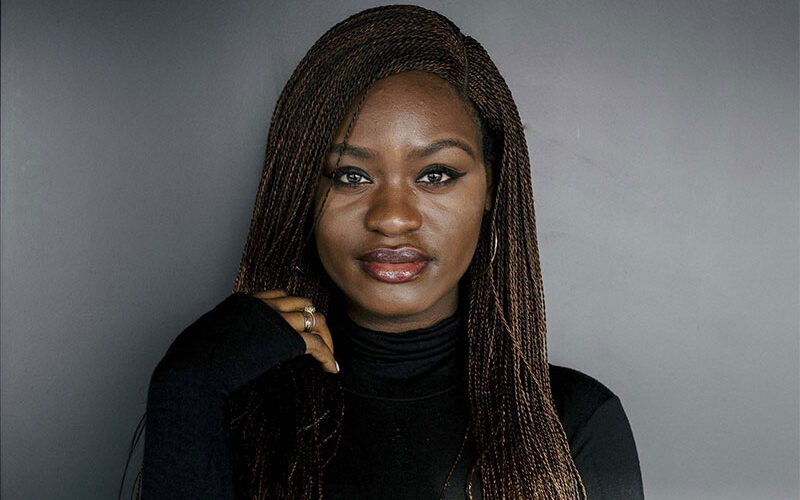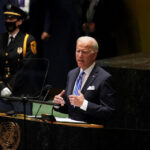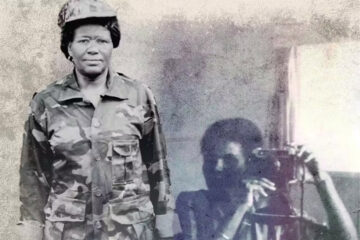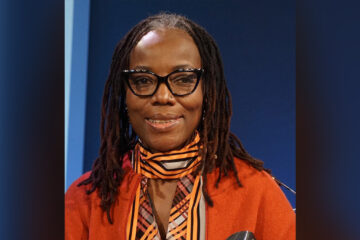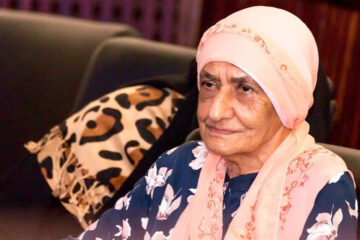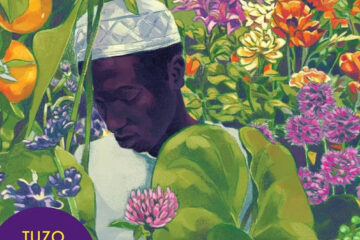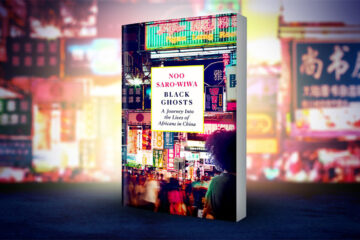DANIELLE BOWLER
REVIEWING Steve McQueen’s Small Axe, a collection of films, for The New Yorker, the masterful cultural critic Doreen St Félix writes: “One way to measure a filmmaker’s commitment to his subject is to look at the not so minor details, such as costumes, wigs, and food. If the paraphernalia of a people doesn’t feel forged but, rather, appears to have been lifted unmolested from observation or memory, or both, then the effect is immersion – the melding of reality with the world of the screen. Black folks haven’t often felt that rush.”
She finds in McQueen’s work “a kind of revolutionary attention… paid to the physical world of the characters” that is evident across scenes. It is in “head-wrapped women fussing over a bubbling vat of sunshine-yellow curry goat; [and in] men haggling over cards in true patois”. This, St Felix writes, demonstrates “the sincerity of the project’s creator, who is publicly claiming his place in a community, and who wants every aspect in the political tableau to be just so”.
She reminds us, then, that attention to detail can be a measure of commitment, of care, belonging and love – all of which are related refractions that move in the glint of each other’s orbit.
It is this kind of commitment and attention, too, that marks British-Nigerian writer Bolu Babalola’s literary debut, Love in Colour. The book draws together and remakes mythical love stories from across the world, including Nigeria, Ghana, ancient Persia, ancient Greece, Lesotho, China and more – all of them placing Black characters at their heart.
It is in the story drawn from that of Nigerian goddess Osun, for example, whose hair Babalola describes as “dark and rolling, with thick coils swelling around her face like a towering tide”. Lingering in the back of this description is a clear intention to highlight Black culture, features and modes and have them be at the centre. And it is in this way that Iranian professor Sharyār’s favourite food, ghormeh sabzi, a herb stew, is woven into a retelling of Scheherazade. And it’s there too, in Thisbe and Pyramys’ love story – with Brandy’s I wanna be down as the soundtrack – no longer set in Mesopotamia but in a world of Black Brits.
Claiming the centre
In Babalola’s world-making, love is in the details. It’s a modern love landscape, both careful and care-filled with its treatment of stories that have their roots in war, empire, patriarchy and violence. In her reworking, she extracts their violent epicentres, making them anew. Reading these stories, something deeply meaningful then emerges: against the starkly white centre of the mainstream culture of romcom lovescapes, a particular experience – white – is presented, and allowed to masquerade, as the universal.
While love in colour has always existed, which the collection makes clear, it is reminiscent of Toni Morrison’s words: “I stood at the border, stood at the edge and claimed it as central… and let the rest of the world move over to where I was.”
A sense of cinema
Love in Colour has a cinematic sensibility. Babalola’s sense of determined detail is both an ethical and political commitment, and a vivid writerly style. This is not surprising, given that the story that first brought her work to public attention was Netflix and Chill – shortlisted for the 2016 Guardian and 4th Estate BAME Short Story prize – and also in light of her background working as an assistant producer at the BBC.
At the mention of this sense of cinema to her, as we talk over Zoom, Babalola says: “That’s the best thing anyone could say to me, because I really wanted people to be able to live within these characters and to be in the room with these characters.
“I want people to feel that love is possible. It’s for Black people, it’s for Black women particularly, but also love is universal, so it’s for everybody. But in these characters I really wanted Black women to know that love is possible for them, in a world that’s telling them they are too this, they are too that… I wanted them to know that you can be anything you want and have that iteration of romance… it’s in your reach.”
Creating these stories was a process deeply rooted in research – both sourcing them and populating their terrain. “I did a lot of character work,” she says. This, of course, included scrapping the old narratives and restarting to honour the characters she created and the world they inhabit.
Babalola creates Black women with deep and rich interior lives, agency and a complexity that reflects a range of nuances in their lives and between them. There is in Thisbe, the smart college sweetheart, a sense of certainty and relatable insecurities. Then there is Yaa’s determined social justice ethic and struggle with the tension between familial desires and her own. Music writer Orin, with her quick-witted brilliance, is a complex woman too, as is pop star Zhinu with her youthful search for herself through song.
This sense of intention is found too, in romance’s function in the characters’ lives. “Romance is lovely and this is obviously a book about romance,” Babalola says, “but I don’t want it to be the entirety of the women’s life.
“I wanted the romantic partners to be an accentuation, rather than the substance of their affection for themselves. I wanted it to be like, ‘I like myself and also I like that they like me’.”
A singular voice
There is much joy in the way Babalola speaks about this work as we talk. That is also palpably present on the page. She appears to effortlessly keep laughter, lightness and the heavy load that both life and love bring in the same orbit. It is a space, then, of complexity.
Throughout these stories, the clarity of her singular voice emerges – witty, tender, hilarious, clear and deeply rooted in the now. Babalola is a writer rooted in the subtle textures of the Black vernacular of her British-Nigerian roots and our collective home, the internet. She is also adept in the language of romance, as a self-proclaimed “romcommisseur”. She is a dexterous writer who is able to succinctly and simultaneously craft a collection, soon-to-be-published novel, television pilot and tweets.
It’s both this skill and an understanding of the importance of specificity and details in every aspect of storytelling that allows her to slice into a single word in analysing the “innate Black Britishness” of Michaela Coel’s television series I May Destroy You. The word is “rah”. It is a word with many specific meanings, as Babalola writes. In an incisive, poetic analysis, she says the word is “a declaration of shock”, an “acknowledgement of deep, confused hurt”, a “prelude to an emotional explosion, a raucous reckoning…” It’s a word that “the average Black Brit feels that shit in their gut”.
Speaking about it, she says: “I just had to… It started off because the BBC subtitles translated it as ‘raw’, and I was just, like, first of all get another diverse team to do your subtitles. But also, like, it’s just like that intimacy of black language is so important, the intonations, even in our different languages across the continent. The musicality of our language, the movement of our language. And what I love so much about being African is even when we don’t speak the same language, there’s a movement that you can translate… It’s such a beautiful thing.”
This understanding of the links between language, context and being reverberates across Love in Colour.
“I’m never not going to write like that. It’s so important to me to preserve our beats and our rhythm in however way that comes across,” Babalola says. And, “in the different stories across Africa, I really wanted to get that cultural specificity across”.
Suggesting to her something that appears too easy in its analysis, that the idea that in the book love is in politics and that the inverse is also true, she says amid laughter: “It’s funny, I just did an interview for a newspaper and they were like, ‘Oh you’re clearly a political person, but you’re also romantic. How does that reconcile?’”
For her, the link is clear: “My politics is my love, that’s who I am. It’s not as if they are two separate parts that are warring within me.”
In a recent interview, she astutely pointed out: “Love is political. It’s a radical act. When I compare the BLM [Black Lives Matter] or SARS [Special Anti-Robbery Squad] protests to my parents’ generation… there was so much unity, and that unity comes from love of communities. When it’s infused in politics, a lot of change for good can come about.” It’s a reminder, too, that we are speaking a week after the Lekki massacre in Lagos, Nigeria.
Politics of love
It’s in the final story, Alagomeji, set in Lagos, in which Babolola’s brilliance in working and innovating within a formulaic form – the happily-ever-after – takes centre stage. The detail is crisp, vibrant and tangible. Her love for the city merges architecture and history, a space where red slate sits alongside concrete in a postcolonial 1970s Nigeria trying to make itself new. All this as she draws references of place, food and language that are intricately spun into a story rooted in specificities. It’s one that has a close connection, “loosely based on” her parents’ love story, which is described in the book as one their daughter “saw up close in vivid, bright strokes of pigment”.
Here, she deconstructs storytelling – delivering the detail in ways that show us all the parts of a narrative. We are let into the lives of a princess and prince. We are let into how they go to school, how they meet and how they fall in love. Within this, there is a delicately masterful way that she is able to reveal the mechanics of writing while maintaining a sense of magic.
Pop Culture
Babalola finds inspiration in many sites of pop culture, including the writing in This is Us, a television show that spans “multigenerational love, familial love, romantic love”.
“I learn so much from pop culture, so much about our society,” she says, further reflecting that “pop culture is… arguably the most accessible part of culture and it’s such an immediately reflective part of what is happening in the now”.
In a profile by Kemi Alemoru for gal-dem magazine, Babalola asks: “If humans are defined by their stories, one effective tool is completely hiding their culture. What art did we create before?”
With these words and her work across many forms and platforms, she reminds us that culture is always being made, shifting and moving in ways that are attuned to the politics of our times. And with this collection, Babalola’s writing demands that we pay attention to the ways in which she is harnessing, innovating and working with and alongside this sense of culture, too.

